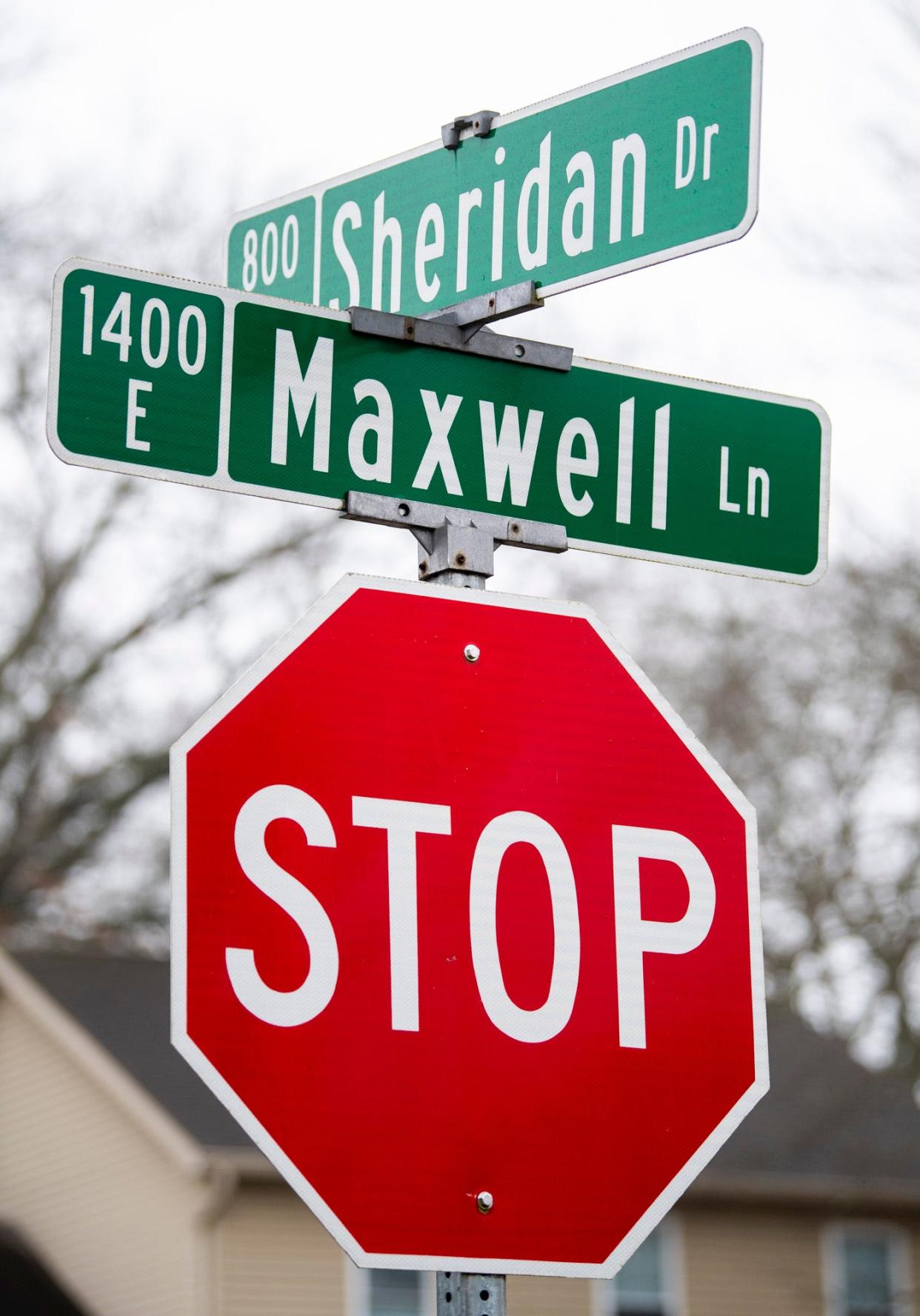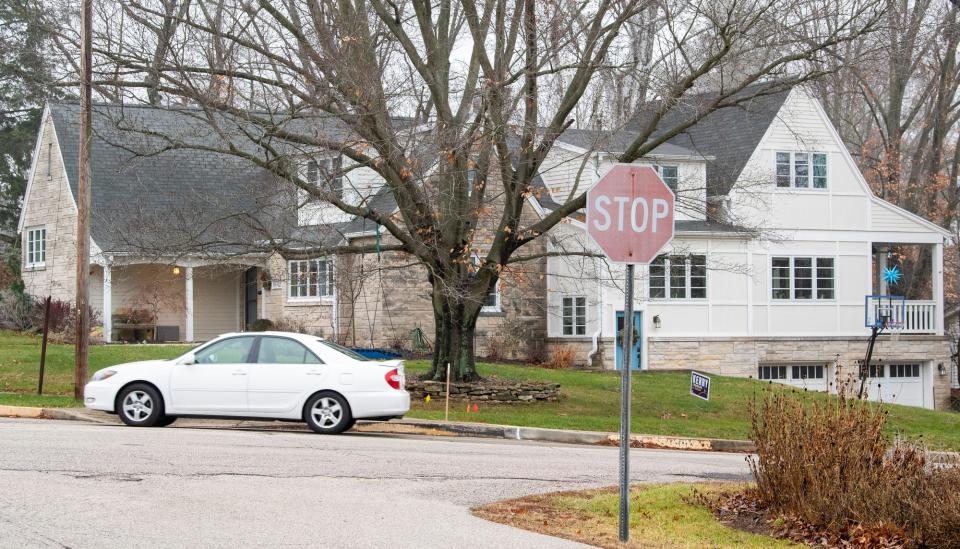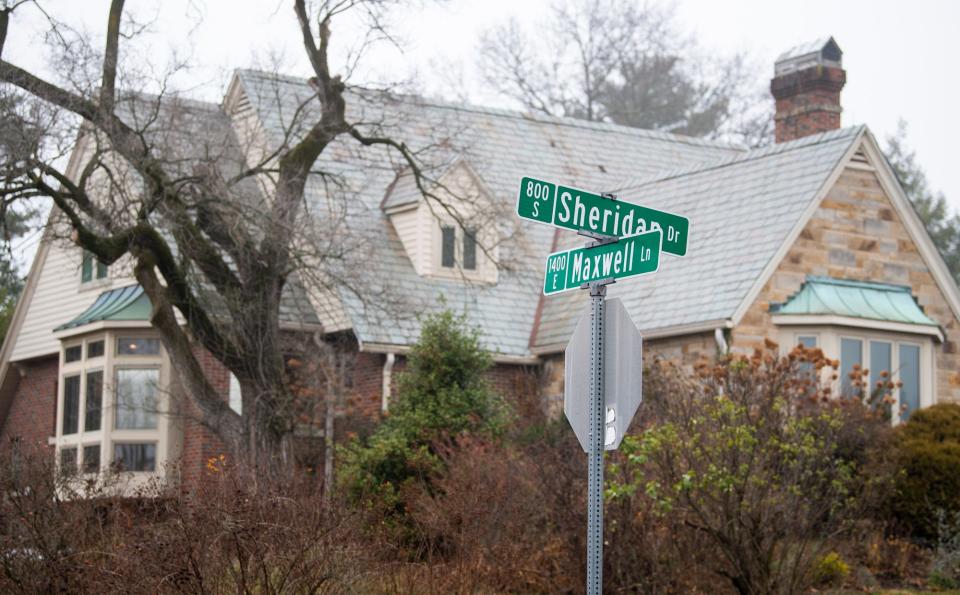A stop sign where none is needed? Lessons in politics, persistence, privilege.

Depending on whom you ask, recently installed stop signs at the intersection of East Maxwell Lane and South Sheridan Road in Bloomington are the result of either perseverance or privilege, perhaps a bit of both, with a dollop of politics on top.
By itself, installation of stop signs isn't big news. But in this instance, public and private discussions about the need for signs at this particular intersection reveal competing philosophies that color discussions in Bloomington about complex issues such as annexation, homelessness and lack of affordable housing.
The views of city council members about the installation of stop signs in a wealthy neighborhood serve as a preview to a political clash that may reverberate in the coming mayoral and city council elections. The incumbent mayor isn't seeking re-election, and at least two of nine council members will be gone after this year. Newly drawn city council districts add to the uncertainty.
How to get a stop sign
Stephanie Hatton has lived three houses west of the intersection of Maxwell Lane and Sheridan Road for about a year, but has driven through it for 25. She said a hill at Maxwell reduces sightlines and makes it difficult for drivers and pedestrians to see one another.
While the city has documented no accidents at the intersection in five years, Hatton said some neighbors have seen accidents and close calls.
Hatton worried about her 5-year-old son, her husband, Brian, their dog, their neighbors.
She contacted the city’s engineering department about adding stop signs and was told the only option would be traffic calming additions.
Behind a different wheel:Record-holding Bloomington Transit driver trades bus for Dodge Ram
"I would describe the conversation as contentious,” she said. Many of her neighbors objected to traffic calming, such as speed bumps, and instead wanted a four-way stop, which, they said, was a faster, cheaper way to address their concerns.
The Bloomington Traffic Commission disagreed, rejecting Hatton’s four-way stop proposal, citing, among other things, the lack of accidents at the intersection.
The matter could have stopped there, but neither Hatton nor her neighbors were happy with the outcome. So she contacted her city council representative, which prompted more analysis and City Engineer Andrew Cibor coming to the site to take a look for himself.
Cibor said his visit and available data convinced him the intersection provided challenges, but traffic calming would be the preferred solution. State and federal transportation departments have detailed guidelines about when to install stop signs. “This intersection really did not meet any of those guidelines,” he said.
But Cibor acknowledged he didn’t have major concerns with a stop sign, saying it was a “tough decision” because the intersection is unique.

Hatton said she’s not necessarily opposed to additional interventions, including a narrowing of the road, but she and her neighbors wanted a more immediate fix.
She worked with some city council members to draft legislation that would require they be installed. She made a presentation to the city council in November; six voted in favor.
That was that.
'Used to getting their way'
For Greg Alexander, a Bloomington native, computer programmer, traffic commission member and frequent guest at city council meetings, the stop sign installation smacks of privilege.
The intersection is a half mile from the mayor’s home and a half mile from city council member Dave Rollo’s house. The four homes at the intersection where the stop signs were installed have an average value of $580,000. They are occupied by, among others, several current and former Indiana University professors, the city’s IT director and a mayoral candidate.
At the city council, people who spoke in favor of the stop sign included a former city councilman, a current mayoral candidate and a former mayor.
"They get their way,” Alexander said. “They’re used to getting their way."
Council member Stephen Volan said asking how many other neighborhoods get such amenities when data shows they aren't needed is a fair question.
What police say about proposal:Bloomington officers oppose Hamilton plan for new police station at Showers Building
While he said it’s unusual for the majority of the council to go against the recommendations of local experts on a matter, “the outcome wasn’t entirely inappropriate."
Alexander said Hatton was allowed an unlimited amount of time to make her presentation. That’s a courtesy even city department heads don't get. Generally, presentations before the council get a time limit.
Volan said the length of the presentation was “unprecedented.” Hatton said if she had been given a time limit she would have adhered to it.
Alexander said the neighborhood stop-sign request consumed a disproportionate amount of time from the traffic commission, city council and engineering staff to the detriment of other traffic-related issues that deserve more immediate attention.
For instance, several city intersections have seen serious crashes and have gotten no attention, he said. Engineering staff is stretched so thin, he said, that overgrown sidewalks are not addressed frequently enough, which means pedestrians have to walk in the street, a dangerous prospect.
The worst part, Alexander said, is that the stop signs won’t address the neighborhood’s concerns. People will, he said, ignore them and drive right on through.
Are stop signs the answer?
The U.S. Department of Transportation writes in its guidelines that stop signs “should not be used for speed control.” Many states, including Indiana, follow those recommendations.
The transportation department of the state of Pennsylvania writes that stop signs may reduce speed immediately adjacent to the signs, but “many drivers accelerate between intersections to make up for lost time."
"Engineering studies indicate that the inappropriate installation of extra STOP signs may cause additional problems, such as more rear-end collisions, a redistribution of traffic onto side streets, wasted fuel, and drivers ignoring the inappropriate STOP signs,” the Pennsylvania document states.

Bloomington City Council member Susan Sandberg, a candidate for mayor in this year’s municipal election, said it doesn’t sit well with her that community members are being criticized for where they live. City officials should welcome and listen to input from residents, regardless of how nice their house is.
Sandberg said she understands not every resident has time to sit through hours of public meetings to have their concerns addressed, but said they do need to speak up to be heard. “We can’t fix things if we don’t know about them,” she said.
She said residents in every part of the city have council members they can contact. District-specific council members, she said, should be made aware of their constituents’ concerns.
And, she said, government agencies, including the city administration, planning, engineering and other departments have to make sure they prioritize the right projects.
A disconnect?
Sandberg said the discussion about stop signs reveals a deeper problem the city of Bloomington should address: an increasing disconnect between city residents and government bureaucracy, between lived experience and the city’s guiding documents.
She said the city increasingly is seeing residents pushing back against “overly engineered” solutions in the city’s plans, from the comprehensive plan to the traffic plan to the bicycle master plan.
When residents complain to city officials that an intersection is dangerous and say they want a stop sign installed, perhaps the city should just listen to them, she suggested, even if the city’s own guidelines call for something else.
“Some of these plans aren’t working as optimally as they should,” Sandberg said. “Not every element of every plan needs to be followed," she added, especially when they don’t make sense for a specific neighborhood.
Many projects may be well-intentioned, Sandberg said, but she is hearing an increasing number of complaints about unintended consequences of projects such as the remaking of Seventh Street. When people are voicing concerns about greenway plans such as that one, she said, the city would do well to listen.
Jail campus debate:Monroe County's commissioners bent on building jail outside city; Critics say not so fast
Council member Matt Flaherty disagrees with Sandberg’s take on the city’s guiding documents, which he said represent consensus since they were compiled with public input. Disregarding the guidelines, especially when politically expedient, brings arbitrariness to a process that should be predictable and transparent, he said.
“I don’t think that’s a good way to make decisions,” Flaherty said.
He suggested the city continue relying on the expertise of the professionals in its ranks and following guidelines the community has created because they are based on empirical evidence and promote the best ways — not the fastest or cheapest — to keep residents safe.
In the case of the intersection of Maxwell Lane and Sheridan Road, city engineers recommended calming devices, not stop signs. While stop signs may seem like an obvious solution to some problems, Flaherty said, they may in fact be a detriment. "Traffic safety is not always intuitive,” he said.
Elected officials venture into dangerous territory when they substitute their personal judgment for the opinions of experts employed to guide decision making, Flaherty said.
If council members don't like the guidelines the city has established, they can propose amendments and changes for the entire council to consider, he said, rather than disregarding the suggestions when they choose.
Boris Ladwig can be reached at bladwig@heraldt.com.
This article originally appeared on The Herald-Times: Stop sign at Maxwell and Sheridan OK'd despite Bloomington pushback

